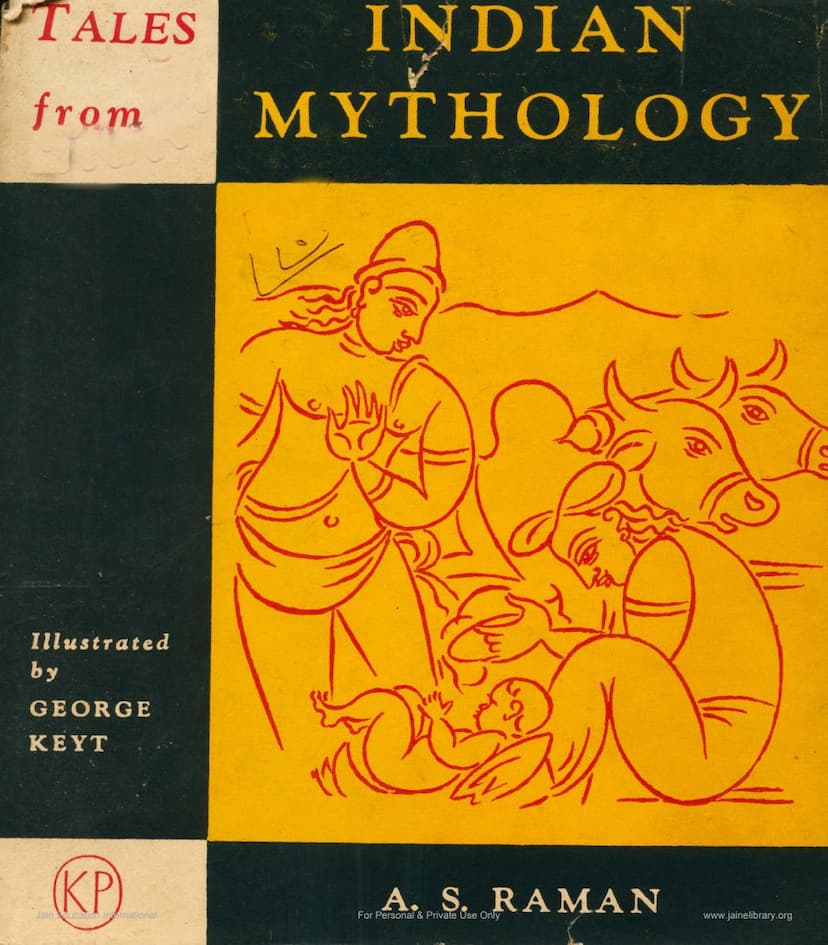Tales FroM Indian Mythology
Added to library: September 2, 2025

Summary
"Tales from Indian Mythology" by A. S. Raman, published by Kutub-Popular, is a collection of twelve retold stories and legends from Indian mythology. The book aims to reconnect modern readers with India's rich cultural and religious heritage, which the author believes has been largely neglected by contemporary youth.
The book is notable for its lyrical and refined prose, designed to be accessible to those suffering from "cultural illiteracy." The author emphasizes the organic link between literature and religion in India, highlighting how these tales of religious heroes have sustained people through trials and tribulations. The illustrations by George Keyt are described as enhancing the impact of the volume.
The Foreword, written by S. Radhakrishnan, praises the book for its beauty and its role in imparting a sense of cultural continuity and ideals of serenity and joy in life. He contrasts the traditional wisdom passed down by village priests and minstrels with the current disconnect from these traditions.
The collection includes stories such as:
- The Marriage of Parvati: Details Parvati's intense penance to win Shiva as her husband and the divine intervention required to overcome obstacles.
- Savitri's Triumph: Narrates Savitri's unwavering faith and determination in confronting Yama, the God of Death, to save her husband's life.
- The Childhood of Sita: Recounts Sita's discovery by King Janaka, her upbringing, and her eventual choice of Rama after he strings Shiva's bow.
- Kaveri and Agastya: Tells the story of Agastya finding the infant Kaveri and their subsequent deep bond, leading to Kaveri's transformation into a river.
- The Birth of Krishna: Describes the circumstances leading to Krishna's birth, including the reign of terror by Kamsa and the divine plan for Vishnu's incarnation.
- Yama and Markandeya: Focuses on the young sage Markandeya's devotion to Shiva and his triumph over Yama, the God of Death, through penance.
- Devayani and Sarmishta: Relates the complex relationship between the Brahman girl Devayani and the Asura princess Sarmishta, and their interactions with Yayati and Sukracharya.
- The Fall of Nahusha: Details how Nahusha, an exemplary king who became ruler of the gods, was brought down by arrogance and lust, leading to his curse as a serpent.
- Ganga and Santanu: Recounts the story of King Santanu's marriage to the celestial river goddess Ganga and their unusual pact, leading to the birth of Devavrata (Bhishma).
- Indra and Ahalya: Describes the abduction of Ahalya by Indra, the sage Gautama's curse, and Ahalya's eventual redemption.
- The Birth of Karna: Chronicles Kunti's youthful use of a mantra granted by Durvasa, her divine son Karna's birth, and his subsequent abandonment and discovery.
- Tapati and Samvarana: Tells the tale of King Samvarana's exile and his love for Tapati, the daughter of the Sun God, and their eventual union with the help of sage Vasishtha.
The book is dedicated to Sita and includes acknowledgements to various individuals who contributed to its production, including Dr. S. Radhakrishnan, J. C. Jain, and George Keyt. The publication date is June 1961. The overall aim of the book is to offer a cultural bridge, making ancient Indian wisdom accessible and relevant to a contemporary audience.